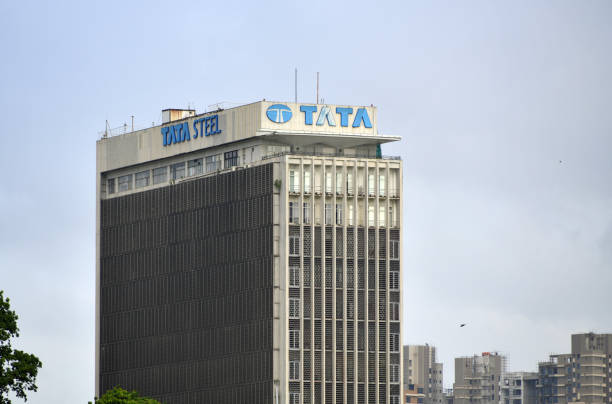Tata Steel, one of the largest and oldest steel manufacturers in India, holds a significant position in the global steel industry. With operations spread across multiple countries, including Europe and Southeast Asia, Tata Steel has developed a diverse portfolio, producing a range of steel products for various industries. Its share price is a key indicator of the company’s performance and the overall health of the steel sector in India and globally. In this article, we will examine Tata Steel share price movements, key factors influencing its stock value, and the future outlook for investors.
A Brief Overview of Tata Steel
Founded in 1907, Tata Steel is part of the larger Tata Group, one of India’s most prestigious and diversified conglomerates. Tata Steel’s extensive product portfolio includes flat and long steel products used in industries such as construction, automotive, and engineering. Over the years, Tata Steel has expanded its footprint through mergers and acquisitions, including the acquisition of Corus (a major European steel producer) in 2007.
Tata Steel Share Price History
Tata group share price has experienced various phases of volatility due to market conditions, internal performance, and global factors. Historically, the company’s stock has been relatively volatile compared to some other sectors, largely because the steel industry is highly cyclical. The stock tends to perform well during periods of strong economic growth and infrastructure development but can face significant downward pressure during economic downturns or when steel demand declines.
For instance, during the 2008 global financial crisis, Tata Steel’s stock price plunged due to decreased demand for steel and a slowdown in construction activities worldwide. The acquisition of Corus also added substantial debt to the company’s balance sheet, contributing to the stock’s decline. However, as global economies recovered, Tata Steel’s share price rebounded, driven by increasing steel demand, particularly from emerging markets like India and China.
Key Factors Influencing Tata Steel Share Price
Several internal and external factors can influence Tata Steel’s share price, making it crucial for investors to monitor these elements regularly.
1. Global Steel Demand
One of the most significant factors affecting Tata Steel’s share price is global steel demand. As a company with a considerable international presence, any fluctuations in steel consumption across major economies can impact its profitability and stock value. Demand for steel is tied to key industries such as construction, automotive, and infrastructure. Any growth or slowdown in these sectors directly affects Tata Steel’s revenues and, by extension, its share price.
2. Commodity Prices
Steel production relies on several key raw materials, particularly iron ore and coking coal. Fluctuations in the prices of these commodities can significantly affect Tata Steel’s production costs and profit margins. When raw material prices rise, the company may face cost pressures, which can, in turn, negatively impact its stock price if it cannot pass these costs on to consumers.
3. Economic Growth
Economic growth, particularly in India and other key markets like China and Europe, plays a critical role in driving steel demand. A growing economy leads to increased infrastructure spending, higher construction activity, and more demand for steel in manufacturing and automotive industries. Positive growth forecasts can result in an upward movement in Tata Steel’s share price, while economic slowdowns often lead to a bearish outlook for the stock.
4. Regulatory Policies
Government regulations, both domestic and international, have a considerable impact on Tata Steel’s operations and stock price. For instance, trade policies, tariffs, or restrictions on steel imports and exports can alter the competitive landscape. In recent years, protectionist measures in countries like the U.S. and China have created uncertainties for steel companies, including Tata Steel.
5. Debt Levels
Tata Steel’s acquisition of Corus added a substantial amount of debt to the company’s balance sheet. Managing this debt is a critical aspect of the company’s financial strategy, and any negative signals about the company’s ability to service its debt can result in a decline in its share price. Investors typically view high debt levels as a risk factor, especially in industries as cyclical as steel.
6. Performance of Subsidiaries
Tata Steel operates and maintains businesses throughout other nations. The performance of these subsidiaries, such as Tata Steel Europe, can significantly affect the overall profitability of the company. For example, while Tata Steel’s Indian operations may perform well due to strong domestic demand, weak performance in Europe can offset those gains and negatively affect the stock price.
Recent Trends in Tata Steel Share Price
In recent years, Tata Steel’s stock has faced challenges due to both global and domestic factors. The COVID-19 pandemic in 2020 led to a sharp decline in global steel demand, causing a significant drop in the company’s share price. However, as economies began to recover in 2021, so did the demand for steel, leading to a rebound in the stock.
Tata Steel’s aggressive efforts to deleverage its balance sheet and focus on expanding its Indian operations have been well-received by investors. The company has also benefitted from rising steel prices in 2021 and 2022, largely due to supply constraints and increased global demand.
In 2023, Tata Steel’s share price continued to exhibit volatility as the global economy faced uncertainties, including inflationary pressures, potential recessions in key markets, and fluctuating commodity prices. However, the company’s long-term growth prospects remain intact, particularly in India, where infrastructure spending and industrial growth are expected to fuel steel demand.
Future Outlook for Tata Steel Share Price
Looking ahead, Tata Steel’s stock performance will likely depend on several factors. First, the trajectory of global economic growth will continue to be a key driver of steel demand and, by extension, Tata Steel’s share price. Second, the company’s ability to reduce its debt and improve its margins will be crucial for sustaining investor confidence.
Moreover, the Indian government’s push for infrastructure development, including initiatives like “Make in India” and large-scale infrastructure projects, bodes well for domestic steel producers like Tata Steel. The company’s focus on sustainability and developing environmentally friendly steel production methods could also open new opportunities, as global industries increasingly prioritize reducing carbon emissions.
Conclusion
Tata Steel’s share price is influenced by a multitude of factors, including global steel demand, economic growth, commodity prices, and the company’s financial health. Making wise judgements requires investors to comprehend these dynamics. While the stock has faced challenges in the past, Tata Steel’s strong market position, extensive operations, and growth potential in India provide a solid foundation for long-term growth. Investors should, however, remain cautious and keep a close eye on global market conditions, which can create both opportunities and risks for the company’s share price.
Read More: Avon Containers Corrugated Box Manufacturers in India
FAQs About Tata Steel Share Price
1. What is Tata Steel’s current share price?
The current share price of Tata Steel fluctuates depending on market conditions. It is best to check a reliable stock market platform or financial news site for real-time updates on the share price.
2. What factors impact Tata Steel’s share price?
Tata Steel’s share price is affected by global steel demand, commodity prices (such as iron ore and coal), economic growth, regulatory policies, and the company’s debt levels. Additionally, performance in key markets like India, Europe, and Southeast Asia plays a significant role in its stock valuation.
3. Is Tata Steel a good long-term investment?
Tata Steel has strong growth potential, especially with India’s infrastructure development and global demand for steel. However, the steel industry is cyclical, so investors should be prepared for volatility. Long-term prospects look promising due to its strategic expansions and focus on sustainability.
4. How does Tata Steel manage its debt levels?
Tata Steel has been actively working to reduce its debt, especially after the acquisition of Corus. The company has undertaken measures like cost-cutting, asset sales, and improving operational efficiency to manage its debt burden.
5. How does the global economy affect Tata Steel’s share price?
As a steel producer with a global presence, Tata Steel’s stock is sensitive to the health of the global economy. Economic growth boosts steel demand, pushing up share prices, while recessions or slowdowns can negatively impact the company’s financial performance and share price.





